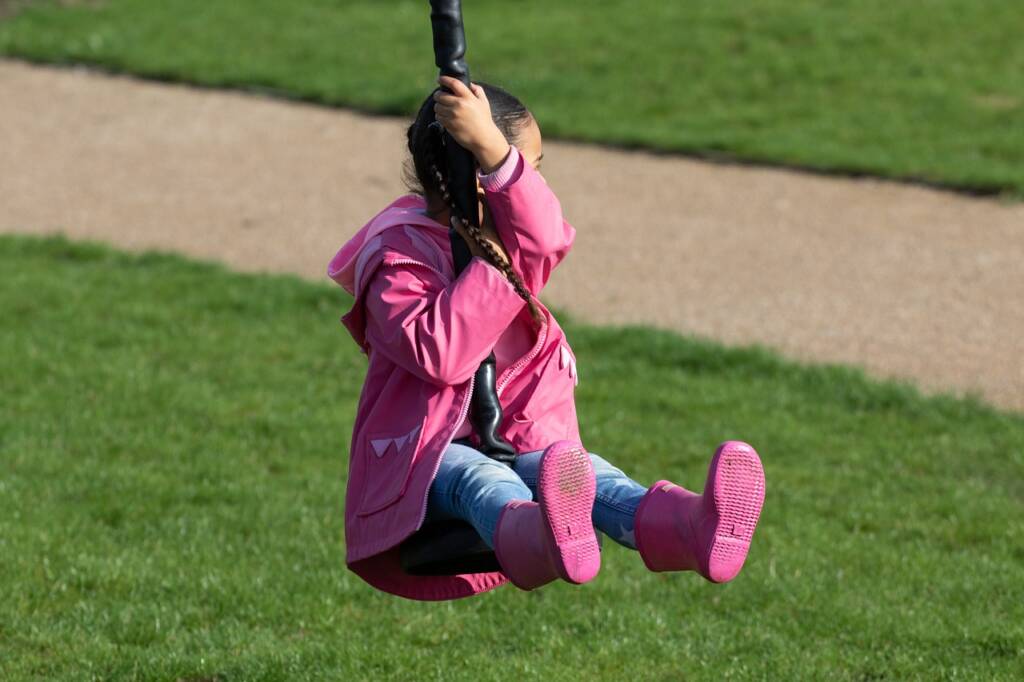- Challenges
- Multi-Sensory Books
- Exposure to Literacy Experiences
- Name Symbols
- Book-Handling Skills
- Experience Stories
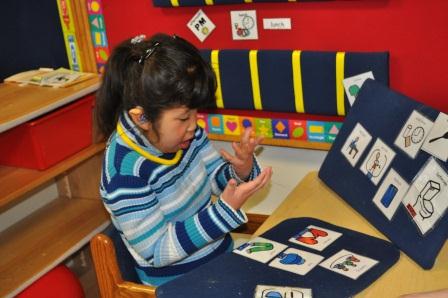 Students with multiple disabilities, including deafblindness, face many learning challenges. They do not learn literacy in typical ways. Often they do not have exposure to books and literacy-based materials. Children with hearing loss may not have heard stories read aloud, and may not have used books on tape. The goal for these students is to maximize access using specialized formats.
Students with multiple disabilities, including deafblindness, face many learning challenges. They do not learn literacy in typical ways. Often they do not have exposure to books and literacy-based materials. Children with hearing loss may not have heard stories read aloud, and may not have used books on tape. The goal for these students is to maximize access using specialized formats.
Challenges
One of the biggest obstacles to developing literacy for students with multiple disabilities is the lack of early literacy experiences. With limited opportunities for incidental learning, many children do not have early exposure to seeing others read or write as part of their daily routine. For children with hearing loss, they may not have benefited from the experience of listening to stories being told or read aloud. Many students have limited access to accessible books, such as dual media (print and braille), auditory or tactile books.
Multi-Sensory Books
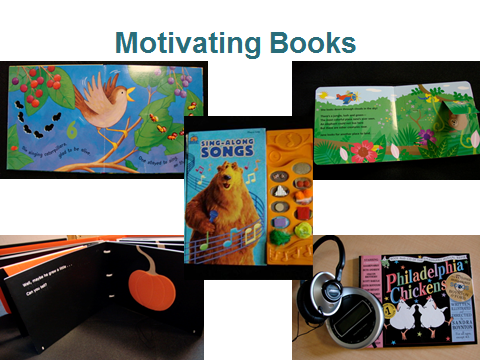
Motivation may also be an issue for students, teachers, and parents, given competing priorities and what may appear to be a lack of interest or meaning in books and stories.
Here are some examples from Deirdre Leech of books that may be motivating to children with multiple disabilities or deafblindness. Note that they include sound, textures, movement, bright colors, and other multi-sensory elements.
Exposure to Literacy Experiences
It is important to modify the environment using visual, tactile, and sign language alphabets, and by creating access to materials. Labeling the environment for students is another way to expose them to literacy, through braille, large print, or tactile labels. Any early childhood classroom has labels on desks, tables, cubbies, etc. and it is crucial to make this information accessible to students with multiple disabilities.
Name Symbols

Accessible name symbols for each individual student are an important way to be able to label their chair, locker, and other personal spaces, as well as to use during attendance, morning meeting and other activities. Name symbols may include a combination of a photo, print, braille, and a tactile symbol.
Note in this photograph how each student’s flower pot is labeled with a different tactile symbol, as well as with braille.
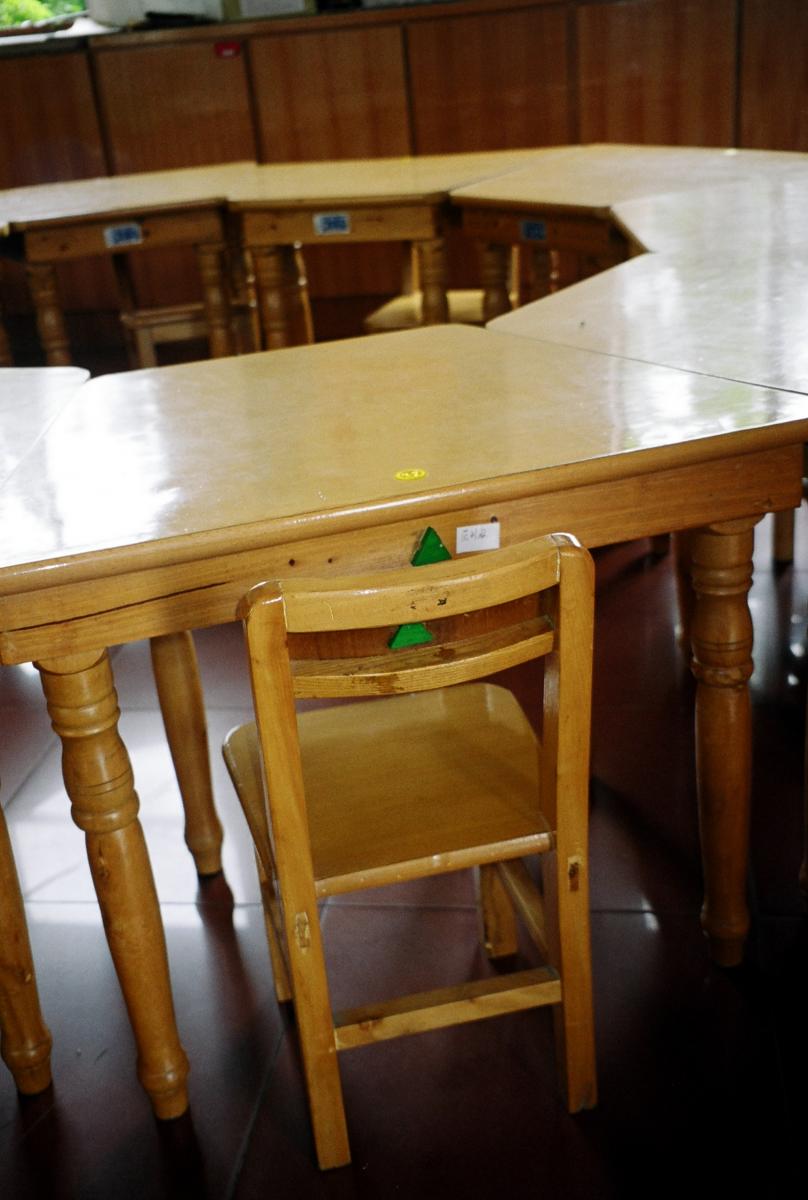
Similarly in the photo at the right, the child’s chair is labeled with a shape (green triangle) that matches the same symbol at his or her place at the table. Braille and print labels should also be included. Note that ideally the symbols should have meaning for the child, but should not be something that is found everywhere. For example, it is better not to use a lego block as a symbol, if there are lego blocks throughout the classroom, as it may be confusing to the child.
Book Handling Skills
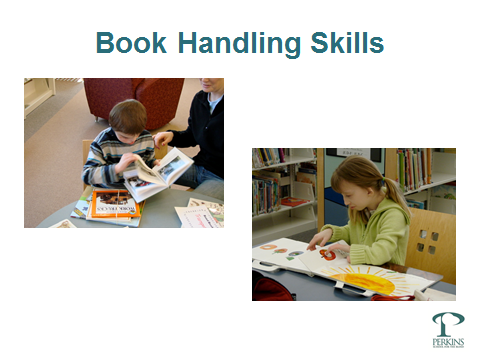
Children should be exposed to basic positional concepts holding a book, including top/bottom, left/right, front/back. They should also have practice turning pages and examining what is on each page. Visits to the library, as well as creating a personal library, can be helpful ways to reinforce these skills.
Experience Stories
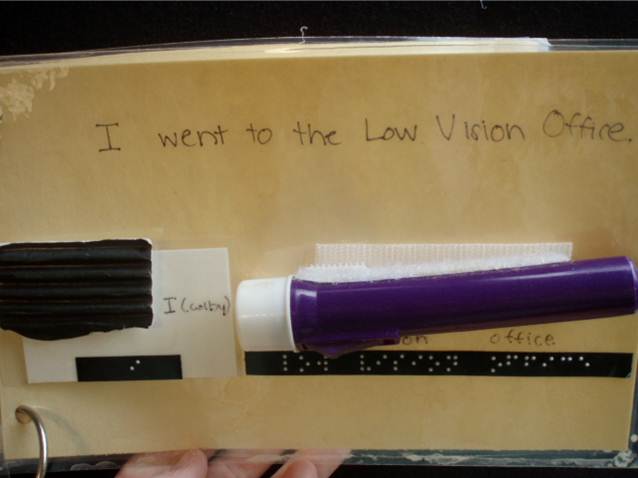
Experience stories are stories written by students and teachers that incorporate real life events into book format. Students participate in an activity, such as a visit to the Low Vision Office, and then write about it using a combination of real objects, symbols, pictures, print, and braille. Shown here is a small flashlight, attached with velcro to the page, which can be taken out of the book and examined or manipulated. As students “read” the book, these objects serve as props to discuss the event and remember the experience. Daily journals or home books are another way to help the students to discuss events in their day, and to share their experiences with others.
See also Experience Books.
To learn more about early literacy and students with multiple disabilities or deafblindness, watch this Perkins Webcast by Deirdre Leech, Perkins School for the Blind, with power point to accompany Perkins webcast.
Another helpful resource is the power point presentation Enhancing the Literacy Experience for Students who are Deafblind, also by Deirdre Leech, Perkins School for the Blind.
See also the sections on Early Emergent Literacy and Emergent Literacy on Literacy for Children with Combined Vision and Hearing Loss. It includes strategies, related skills, examples, videos, articles, and additional resources.



